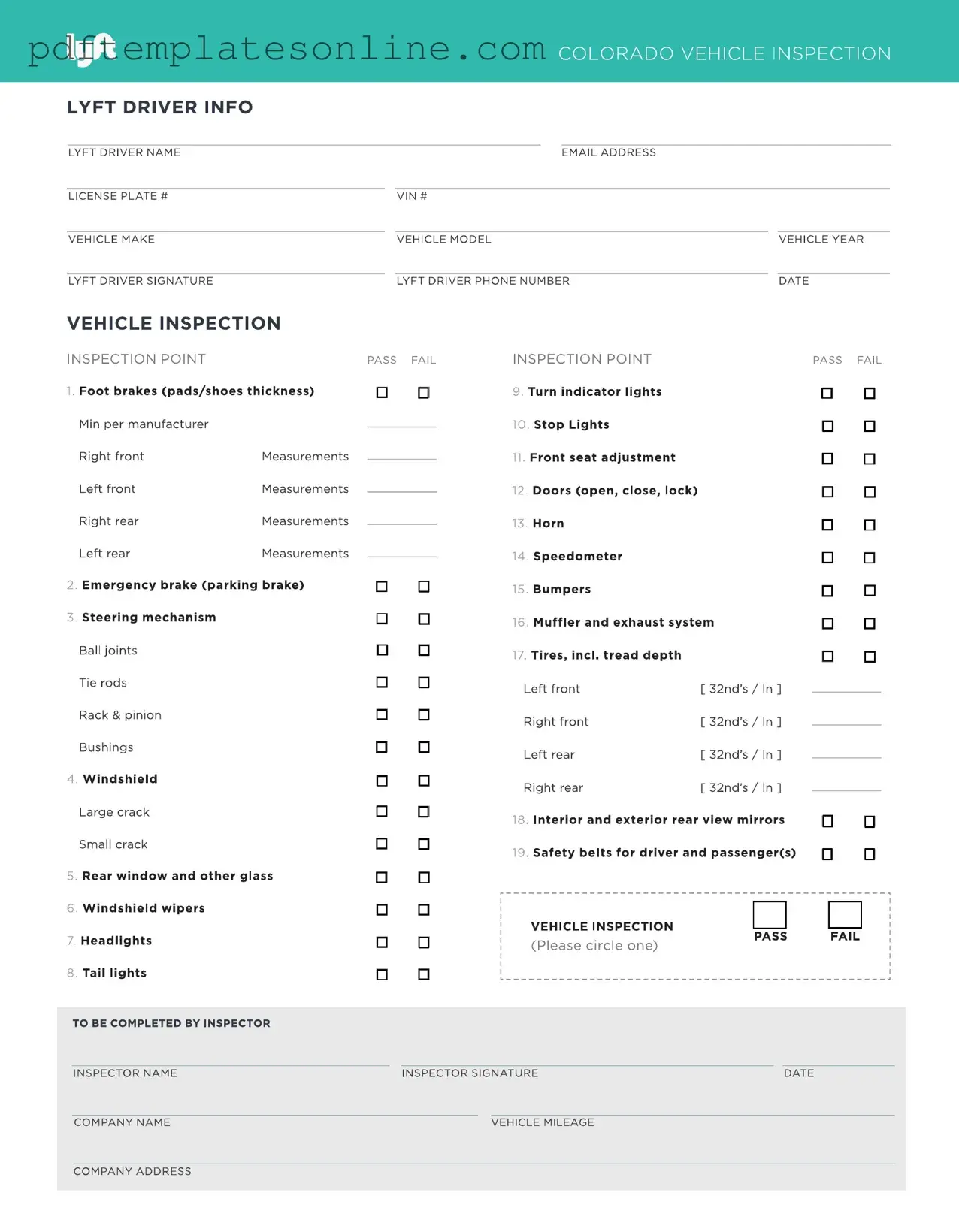Completing the Lyft Inspection form is a crucial step for drivers aiming to ensure their vehicles meet the necessary standards. However, several common mistakes can hinder the approval process. One frequent error is neglecting to provide accurate vehicle information. This includes details such as the make, model, and year of the vehicle. Inaccuracies can lead to delays or outright rejections of the inspection.
Another common mistake is failing to document all required attachments. The inspection form often requires additional documentation, such as proof of insurance and registration. Omitting these documents can result in an incomplete submission, which may require resubmission and prolong the approval timeline.
Some individuals mistakenly overlook the necessity of a thorough vehicle inspection prior to completing the form. A vehicle that does not meet Lyft’s safety standards will not pass inspection. Therefore, it is essential to ensure that all safety features, such as brakes and lights, are functional before submitting the form.
Providing unclear or illegible handwriting is another issue that can complicate the process. If the information is difficult to read, it may lead to misunderstandings or errors in processing the form. Clear, legible writing is vital for effective communication.
Additionally, some drivers fail to double-check the information they provide. Simple typographical errors, such as incorrect license plate numbers or VINs, can cause significant delays. Taking a moment to review the details can prevent these avoidable mistakes.
Inadequate knowledge of the inspection requirements can also lead to errors. Each region may have specific regulations or additional requirements. Familiarizing oneself with local guidelines is essential to ensure compliance and avoid unnecessary complications.
Another mistake involves not keeping a copy of the completed form. Retaining a copy is beneficial for personal records and can serve as proof of submission if any issues arise later. Without documentation, resolving disputes becomes challenging.
Some drivers may also misinterpret the instructions provided on the form. It is important to read all guidelines carefully to avoid miscommunication. Misunderstanding the requirements can lead to incomplete submissions.
Lastly, procrastination can be a significant pitfall. Waiting until the last minute to complete the inspection can result in rushed submissions, increasing the likelihood of mistakes. Planning ahead allows for a more thorough and accurate completion of the form.
In summary, attention to detail is paramount when filling out the Lyft Inspection form. By avoiding these common mistakes, drivers can streamline the approval process and ensure compliance with Lyft's standards.
